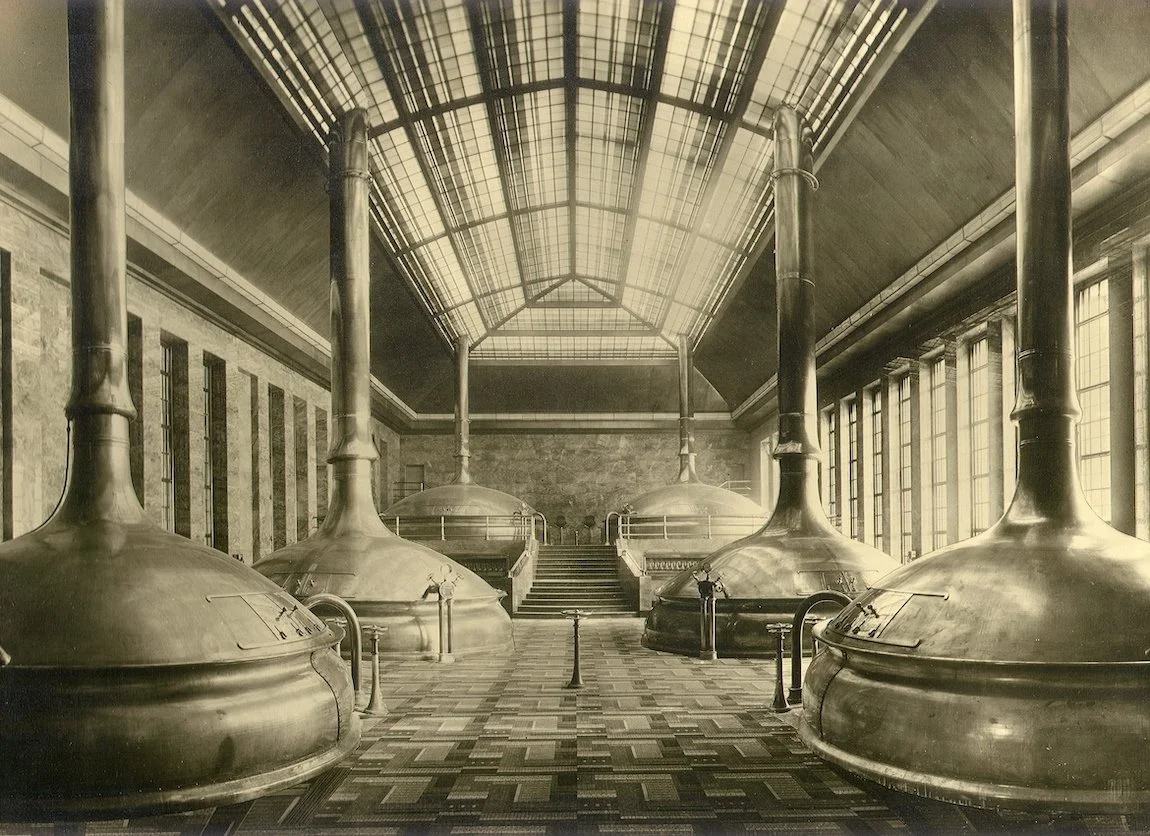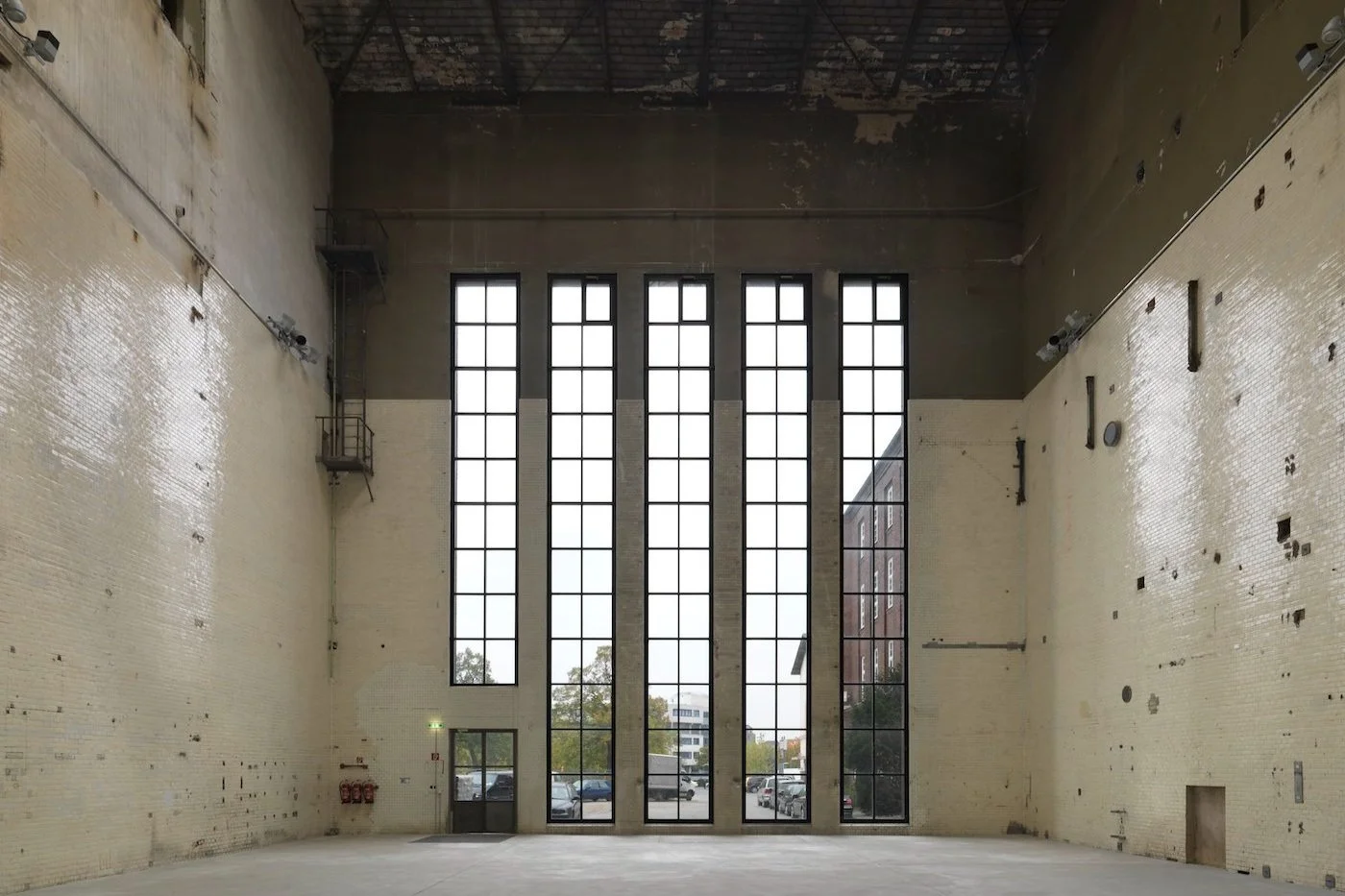History of the KINDL
Since 2016, the KINDL – Centre for Contemporary Art has presented temporary exhibitions of international contemporary art, serving as both a site of artistic production and a space for public dialogue. The centre occupies a building rich in history – many traces of the former brewery remain visible throughout. The characteristic brewing coppers and the monumental Kesselhaus, or boiler house, now used for exhibitions, recall its industrial past and lend the site its distinctive character.
Foundation and early years of the brewery
In the wake of the rapid industrialisation and urbanisation that followed the founding of the German Empire, a group of Berlin innkeepers established the ‘Vereinsbrauerei Berliner Gastwirte zu Berlin AG’ on 1 February 1872 in Rixdorf – today’s Neukölln. The brewery was among several producing bottom-fermented lager in the Pilsner style and quickly benefited from rising demand. Berliner Kindl was one of several beers in its portfolio and proved so popular that in 1910 the company was renamed Berliner Kindl Brauerei AG. The brewery’s ‘Goldjunge’ trademark – a blond boy peeking out of a beer stein – was designed by Schöneberg artist Georg Räder and became a highly effective advertising icon. The figure can still be seen today on the handle of the tower’s entrance door beneath its pointed arch.
Expansion and economic boom in the 1920s
The 1920s were a period of significant growth. As the brewery expanded, a modern complex was built. The Sudhaus, or brewhouse, constructed from 1927 based on plans by architects Hans Claus and Richard Schepke, is still admired for its expressionist architecture. At the time, it was promoted as one of the most beautiful brewhouses in Europe. The 38-metre-high tower, reminiscent of religious architecture, became a local landmark. The interior – with grey-blue marble wall cladding, elaborate floor mosaics, and windows made of coloured crystal glass – reflected the brewery’s economic confidence and modern outlook.
The Second World War and the post-war years
As early as 1937, the brewery was designated a ‘National Socialist Model Company’. During the Second World War, prisoners of war and forced labourers were made to work on site. In 1944, the premises were heavily damaged by Allied air raids. Following the end of the war in 1945, parts of the technical plant were dismantled and transported to Moscow as reparations. Brewing resumed in 1947 on a modest scale, and reconstruction and modernisation followed in the 1950s. Under the direction of cinema architect Gerhard Fritsche – who also designed the foyer of Berlin’s renowned ‘Zoo Palast’ movie theatre – the brewhouse interior was redesigned. Using materials such as copper, brass, white metal, Jura limestone from Franken, and ivory-toned Detopak glass-ceramic tiles, Fritsche created a bright, open space that contrasted with the expressive exterior.
Closure and transformation into an art centre
From the 1990s, the brewery gradually reduced production. In 2006, the Neukölln facility was permanently closed, resulting in the loss of 160 jobs – a significant blow to the district. In the years that followed, the site was temporarily adopted by Berlin’s art and club scenes as a cultural venue. The Neukölln district administration advocated for its long-term use as a publicly accessible cultural site, in line with heritage protection requirements.
In 2011, the listed building was acquired by the Swiss couple Salome Grisard and Burkhard Varnholt, who, together with founding director Andreas Fiedler, established what is now the KINDL – Centre for Contemporary Art. The architecture was carefully restored and the building extended. Contemporary interventions include a glass and exposed-concrete staircase on the east facade, which was designed by Salome Grisard, an architect, and offers sweeping views over Berlin. The three-storey Maschinenhaus, or machine house, was converted into exhibition spaces; the Sudhaus was repurposed as a café and events venue. Permanent exhibition operations began in 2016.
Today: A Centre for Contemporary Art
Kathrin Becker was appointed Artistic Director in 2020. Since then, the KINDL has focused on the relationship between contemporary art and social issues, positioning itself as a space for dialogue and engagement. Under Becker’s leadership, the discourse and art education programmes have been significantly expanded. The M1 VideoSpace was added as a dedicated platform for video and other moving image works by international artists.
Today, the complex comprises over 1,600 square metres of exhibition space for thematic exhibitions and solo projects. Each year, international artists are invited to create site-specific installations for the imposing Kesselhaus with its 20-metre height and preserved traces of former industrial use. The three levels of the Maschinenhaus each offer around 400 square metres for solo and group exhibitions. Café Babette, located in the Sudhaus, welcomes visitors year-round – and in the warmer months, so does Babette’s Garden, the beer garden beneath the shady plane trees on the KINDL forecourt.





